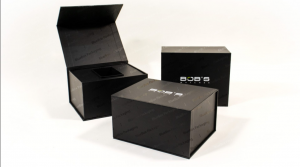please click here:
https://www.cadrotaillift.com/tail-lift.html
Introduction
In the world of modern logistics and commercial transportation, innovation drives efficiency. Among the many technologies revolutionizing vehicle loading systems, the Dual-Rail Model Column Tail Lift has emerged as a standout solution. Designed for heavy-duty, precise, and reliable lifting, this model redefines what's possible for fleet operators, delivery companies, and manufacturers who demand stability and performance under pressure.
Unlike traditional hydraulic lifts, the Dual-Rail Model Column Tail Lift brings together strength, versatility, and safety in one engineered package. It doesn't just move cargo — it transforms the way goods are loaded and unloaded. This article dives deep into how this technology works, its benefits, applications, and how it compares to other lift types on the market.
What Is a Dual-Rail Model Column Tail Lift?
A Dual-Rail Model Column Tail Lift is a type of vertical tail lift that uses two parallel guide rails (columns) to support and stabilize the lifting platform. These columns are mounted at the rear of a vehicle, typically on vans, trucks, or semi-trailers. The lift operates using synchronized hydraulic cylinders or electric actuators that ensure smooth, balanced motion during loading or unloading.
Unlike cantilever or tuck-under lifts, the column-based system remains rigid and aligned throughout its travel. The “dual-rail” feature provides enhanced stability, preventing platform tilt — even under uneven loads.
Core Components Include:
-
Dual vertical lifting columns
-
Hydraulic or electro-hydraulic lifting system
-
Load-bearing aluminum or steel platform
-
Control module and safety interlocks
-
Manual override system
This configuration is particularly popular in logistics, parcel delivery, and refrigeration transport, where cargo safety and efficiency are top priorities.
How the Dual-Rail System Works
The dual-rail design functions through synchronized vertical motion. When activated, both hydraulic cylinders raise or lower the platform along the two guide rails simultaneously. This ensures precise level movement, ideal for transporting fragile or unevenly distributed loads.
The lift is typically powered by the vehicle's battery or a dedicated power unit. Sensors and limit switches maintain positional accuracy, while safety locks engage automatically to prevent accidental descent.
Step-by-step Operation:
-
Deploy the lift from the transport position.
-
Lower the platform to ground level.
-
Load or unload goods.
-
Lift the platform to the desired height.
-
Securely stow the lift before travel.
This seamless process reduces operator fatigue and minimizes loading time — essential for time-critical operations.
Why Choose a Dual-Rail Model Over Other Tail Lifts
There are several types of tail lifts on the market — cantilever, tuck-under, column, and slider models. So, what makes the Dual-Rail Model Column Tail Lift special?
Here's a quick comparison:
| Feature | Dual-Rail Column Tail Lift | Cantilever Tail Lift | Tuck-Under Tail Lift |
|---|---|---|---|
| Stability | Excellent — dual-rail support prevents tilt | Good, but platform may sway | Moderate; prone to deflection |
| Load Capacity | High — suitable for up to 2000–3000 kg | Medium | Medium |
| Maintenance | Low — few moving parts | Moderate | Higher due to folding design |
| Installation Space | External mount | External mount | Beneath chassis |
| Ideal For | Freight trucks, temperature-controlled vehicles | Vans, small trucks | Delivery vehicles needing clearance |
| Precision | Superior level accuracy | Moderate | Basic alignment only |
This table highlights why the dual-rail model dominates industries that prioritize control and durability over compactness.
Key Advantages of the Dual-Rail Model Column Tail Lift
1. Enhanced Load Stability
Dual rails distribute the lifting force evenly across the platform, preventing lateral movement. This is particularly valuable when handling tall, narrow, or unbalanced loads.
2. High Lifting Capacity
The system supports heavier loads without compromising safety or speed. Some models exceed 3000 kg in lifting capacity — making them ideal for industrial-scale logistics.
3. Reduced Maintenance
Because the lift uses fewer joints and pivots compared to foldable or tuck-under models, wear and tear are significantly lower. This reduces downtime and overall operating costs.
4. Precision Lifting and Positioning
Electronic synchronization ensures perfectly level movement, even under asymmetric loads. This is crucial when dealing with delicate materials or automated loading docks.
5. Adaptable Design
Manufacturers now produce customizable versions for various vehicle heights, rear door configurations, and platform dimensions.
6. Safety First
Most systems integrate automatic braking, anti-roll sensors, overload protection, and manual backup systems — meeting or exceeding ISO and CE safety standards.
Applications Across Industries
The Dual-Rail Model Column Tail Lift is not limited to one specific field. Its design versatility makes it an essential asset across a range of industries:
-
E-commerce Logistics: Ideal for parcel hubs requiring constant loading cycles.
-
Cold Chain Transport: Enables seamless cargo transfer without disturbing temperature control.
-
Industrial Equipment Delivery: Handles heavy and oversized loads with precision.
-
Medical Supply Transport: Ensures stability for sensitive or sterile cargo.
-
Event & Exhibition Logistics: Allows easy movement of bulky sets and displays.
As global supply chains continue to accelerate, the need for faster and safer loading systems grows — and the dual-rail model is leading that charge.
The Technology Behind the Design
Modern versions of this lift integrate smart hydraulic control, IoT connectivity, and energy-efficient systems. Sensors can now track lift cycles, detect irregular movements, and even predict maintenance schedules using onboard diagnostics.
Manufacturers are also incorporating lightweight alloys and modular structures, reducing the unit's total weight while maintaining rigidity. These advances improve vehicle fuel economy and extend system longevity.
In the near future, we may see fully autonomous tail lift systems — capable of syncing with automated warehouses or robotic loaders.
Installation and Maintenance Insights
Proper installation is critical for performance and safety. The lift must be mounted to the vehicle chassis using certified brackets and alignment tools. Electrical and hydraulic connections require careful sealing to prevent leaks or power loss.
Routine maintenance involves checking:
-
Hydraulic oil levels
-
Cylinder seals and hoses
-
Platform alignment
-
Safety sensor calibration
-
Control module diagnostics
A quarterly inspection by certified technicians is generally recommended.
Environmental and Energy Considerations
Efficiency and sustainability have become core concerns for logistics operations. The Dual-Rail Model Column Tail Lift addresses both:
-
Reduced energy use: Modern hydraulic pumps consume less power thanks to pressure-demand control.
-
Longer lifespan: Durable construction minimizes waste and replacement frequency.
-
Recyclable materials: Many models use recyclable aluminum or steel for eco-friendly disposal.
When compared to traditional single-column lifts, dual-rail systems often deliver up to 15% energy savings per lift cycle.
Common Challenges and How to Overcome Them
Even the best systems can encounter operational challenges. Here's how to address common issues:
-
Hydraulic leaks: Regular inspection prevents fluid contamination.
-
Uneven platform motion: Likely due to unsynchronized cylinder movement — recalibration fixes this.
-
Control failure: Always ensure connectors are dry and shielded.
-
Slow operation in cold weather: Use temperature-rated hydraulic oil.
Preventive care ensures your tail lift remains efficient and reliable even under demanding conditions.
Future Trends: Smart Lifting Solutions
The industry is moving toward automation, connectivity, and predictive intelligence. New models will integrate with telematics systems, allowing fleet managers to monitor lift performance remotely.
Artificial intelligence will soon allow the system to auto-adjust based on load type, weight, and angle — ensuring perfect balance in every operation.
Additionally, solar-assisted power systems could make electric column lifts even more energy-efficient, cutting dependency on vehicle batteries.
Conclusion
The Dual-Rail Model Column Tail Lift represents more than mechanical innovation — it embodies the shift toward smarter, safer, and more efficient logistics operations. With its precision engineering, stability, and adaptability, it's setting new standards for professional fleets around the world.
As the logistics landscape continues evolving, one thing is certain: the dual-rail system will remain a vital pillar of next-generation loading technology.
Frequently Asked Questions
1. What vehicles are compatible with a Dual-Rail Model Column Tail Lift?
Most commercial trucks, box vans, and refrigerated trailers can be fitted with this system, depending on rear door configuration and chassis strength.
2. How much weight can a dual-rail column lift handle?
Typically between 1000–3000 kg, depending on model and manufacturer specifications.
3. Are dual-rail tail lifts more expensive than other types?
They have a higher initial cost but offer long-term savings through reduced maintenance and improved efficiency.
4. Can these lifts operate in harsh weather conditions?
Yes, with proper sealing and maintenance. Many models are rated for use in extreme temperatures and wet conditions.
5. How long does a dual-rail tail lift last?
With regular maintenance, most units have a service life exceeding 10 years.
Summary
The Dual-Rail Model Column Tail Lift revolutionizes cargo handling with its stability, precision, and high load capacity. Designed for logistics, cold chain, and heavy transport, it outperforms traditional lifts through enhanced safety, energy efficiency, and smart control technology.






